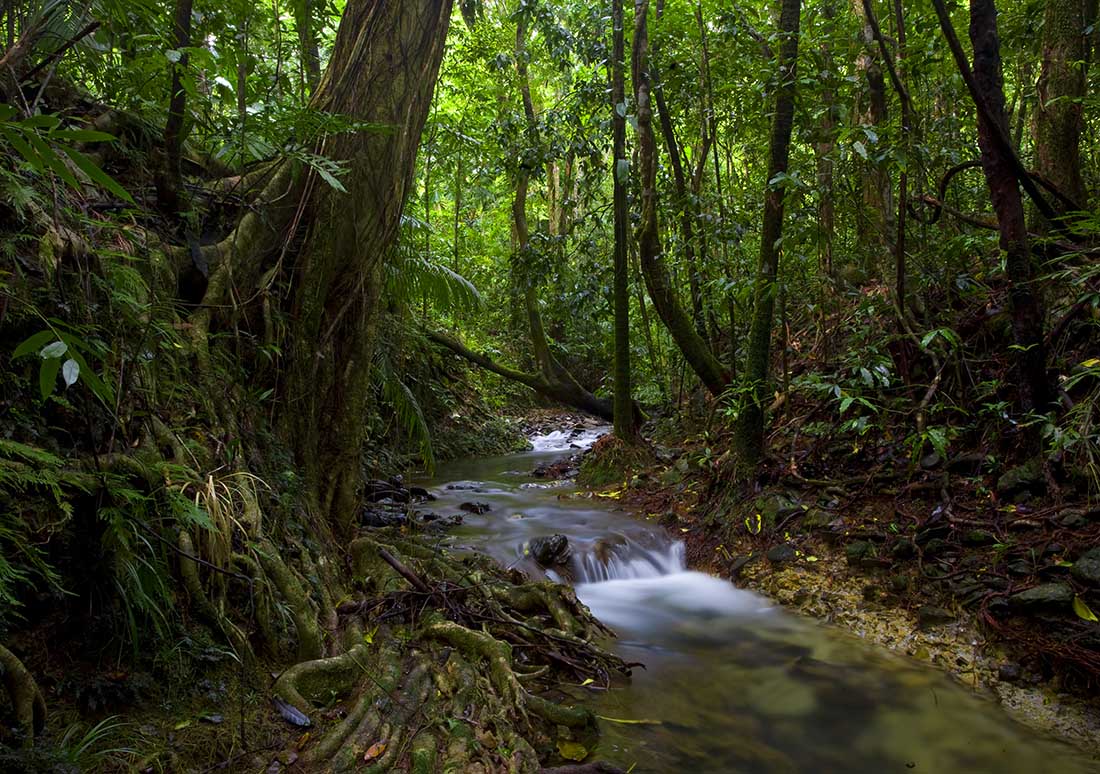Last week I visited Port Douglas and Cape Tribulation in Australia, where I spent two days snorkeling the Great Barrier Reef and three days hiking in the Daintree rainforest. The magnificence of the coral reefs as they provided food and shelter to marine life was awe inspiring, yet the tragedy of the coral reefs dying, as they turn brown and then white, overwhelmed me. Trekking in the rainforest, I thanked the trees, ferns, and palms for absorbing carbon and providing clean air for us to breathe. Yet the rainforest lets us know that the carbon is harming it also.
This experience reminds me of my interdependence with nature, and of how our lifestyle based on fossil fuel energy, meat-based diets, and industrial agriculture is overheating Mother Earth. As our activities emit greenhouse gases and destroy the forests and soil, the GHG emissions end up melting the ice caps and glaciers, and warming and acidifying the oceans. We are killing species, including humans, as we change the climate and harm the planet’s ecosystems.
Enjoying nature is an important part of enjoying life, as we slow down to savor the moment and appreciate being alive. When we return from being at one with nature, we are energized to work to heal Mother Earth. Human interdependence with our environment is an integral part of Buddhist economics. All activities by companies, governments, and people can be undertaken in a way that protects rather than exploits nature and our natural capital. We heal ourselves as we care for Mother Earth.
Buddhist economics shows us a path for transitioning to a low-carbon world, and we heal ourselves as we care for Mother Earth. Previous blogs discussed how we can reduce our carbon footprint by not driving gas-guzzling vehicles and by including less meat and more plants in our meals. Here is a quick summary:
Ponder the problems you are causing with each gallon of gas, which is putting an average of 250 grams/mile of CO2 into the atmosphere in California (and even more in other states without California fuel standards). What vehicle you drive makes a big difference to how much you are polluting the air. If you drive the popular Honda CR-V with 27 mpg (miles per gallon), you are polluting 70% more than if you drive a hybrid Toyota Prius with 46 mpg. If you drive an electric Chevy Bolt with 119 MPGe, then you are polluting only 40% as much as with a Prius, and your emissions drop to zero if you use renewable electricity to charge your car. If you drive a pick-up truck or minivan with 22 mpg (or worse), you are polluting 20% more than the Honda SUV. Your vehicle is adding carbon to the atmosphere, and your choice about which vehicle to drive and how many miles to drive make a big difference. Your driving style also matters. Eliminating aggressive driving and speeding can improve fuel efficiency and reduce driving emissions by 10%.
If you eat meat, what kind of meat you eat makes a big difference. Beef creates more than double the emissions of pork, and close to four times the emissions of chicken. Lamb is even worse than beef. Fruits, vegetables, and nuts create less than one-third the emissions of chicken (and a twelfth of beef). So as a first step, drop beef and lamb from your diet and limit your daily consumption of meat to less than four ounces. This starts you on the way to a healthier diet for you and for the earth.
Future blogs will discuss other ways we can change our daily habits to support rather than kill nature. May we join together to heal Mother Earth as we heal ourselves, for the benefit of all.
As Thich Nhat Hanh writes, “Caring about the environment is not an obligation, but a matter of personal and collective happiness and survival. We will survive and thrive together with our Mother Earth, or we will not survive at all.” Love Letter to the Earth, p 82
